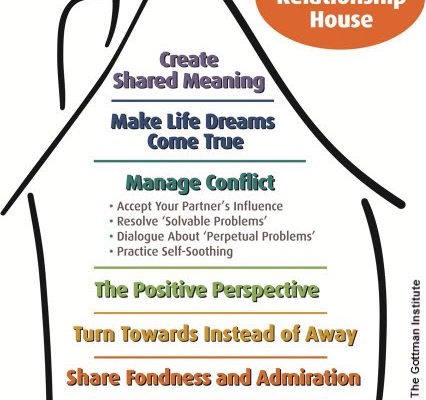 Harboring fantasies about someone else while happily coupled isn’t unusual. In most relationships, whether of two years, 20, or more, one or both partners will likely experience fleeting moments of imagining how exciting life would be with a different person. This could begin innocently while flirting in the break room, or having coffee with a co-worker, or reconnecting with an old lover. Such moments provide a sweet, brief ego boost. But when short-lived fantasies take hold, moving from transient to obsessive, we should take heed.
Harboring fantasies about someone else while happily coupled isn’t unusual. In most relationships, whether of two years, 20, or more, one or both partners will likely experience fleeting moments of imagining how exciting life would be with a different person. This could begin innocently while flirting in the break room, or having coffee with a co-worker, or reconnecting with an old lover. Such moments provide a sweet, brief ego boost. But when short-lived fantasies take hold, moving from transient to obsessive, we should take heed.
When Erotic Fantasies Cross the Line
Fantasies are significant as a precursor to affairs because imagination is a precondition of desire, which awakens our senses. Though we’re pretending, a fantasy can actually feel closer to our authentic selves, or the selves we think we should be. That is why we come alive again when we encounter new love. Risky and exciting, it pushes the boundaries we have established in ourselves.
In such reveries, we imagine how much more fun, sexier, and passionate we would be in this other relationship. The key here is how different we would be. For although partners play a role, it’s usually not the marriage that has grown stale, but how we see ourselves. Although we cherish marriage’s safety, permanence, and predictability, these qualities can also be deadening. In my psychotherapy practice, I have seen time and time again how couples lose their connection by trying to live as a perfect couple, then a perfect family. The struggle to earn a good living, make a good home, and raise a strong family takes priority. Children claim much time, space, and emotion. Sports, band, scouting; daily squabbles about homework, screen time, and chores—all these issues squeeze yet more time from romance.
Because we do long for the continuity and safety of togetherness, the lack of romance feels okay–until one day, we realize it doesn’t. But it’s this gradual erosion of intimacy that can lay the groundwork for fantasies of another partner that then play out in meetings, confidences, and intimate details of mutual marital disenchantment. Soothing support from an attractive other can be intoxicating. In an emotional or physical affair, we feel young. Our old boredom falls away to reveal a passionate, sexy person. We blame the spouse for our dull lives. The new love gives us the illusion that we are different, and we don’t need to look at our well-constructed fortification against insecurity.
If you’ve lost your Self through trying to be a perfect couple or family, addressing this problem is a worthy goal. But running to the novelty of a new partner is a feeble way to do it. It’s true that marriage requires surrendering parts of our Self in the service of the relationship, and many people feel regret about their choices, often triggered by a crisis or major life shift (such as aging or retirement, giving up their career to raise a family, or the loss of possible adventures in favor of marriage’s security.) But we should remember that surrendering the Self can be tremendously valuable to growth as long as we don’t give up too much– and also that disowning responsibility and projecting our unhappiness onto a partner is a set-up for an emotional or physical affair.
Understanding Your Role When Romance Leaves the Marriage
If excitement has disappeared from the bedroom, leading to fantasies about someone else, the best next step is to understand our own role in the situation rather than giving up on the marriage in search of novelty. When we marry, we make vow, implicit or explicit, that issues are to be faced together and worked through, not evaded. James Hollis writes in The Eden Project: In Search of the Magical Other (1998) that the greatest gift to others is our own best selves. Our marriage may have met our need for grounding—to be known, and to know our partner, with a comfortable predictability. But this devotion to security and familiarity eventually collides with our need for breaking established patterns so that we can encounter something unpredictable and awe-inspiring. Romantic passion can indeed be the chariot to take us there, but not if it is the creation of an affair, no matter how compelling.
And the irony is that if we do take up a new relationship, we are still ourselves, and over time, that relationship will lose its allure. I have seen countless clients on their second or third serious relationship who privately admit that they made a mistake. They realized too late that they, too, had a role to play in what was missing in the relationship. Often, the same issues come up with the new partner. They feel deep regret for breaking up a good thing in favor of an illusion, however intoxicating it is. There are exceptions: sometimes an affair is a stepping stone out of a bad, unfixable marriage and that new relationship can bring happiness and healing.
Averting an Affair
Averting an affair is doable, but it takes work from both partners, because talking about dissatisfaction with our love life is scary. It requires partners to look, unflinchingly and together, at just where we’re most vulnerable—our sexuality.
Couples therapy is often about helping partners understand that what they think are impediments to their sensual pleasure and satisfaction, and out of their control, are in fact, their constructions. Through all the travails of marriage, when we can still embrace and encourage individual growth, and not have to sacrifice the security and safety our relationship provides, our love deepens. And that makes room for romance.


 Healthy relationships are built on a strong foundation. In Northern California, where I live, houses are constructed on a solid footing to protect them in an earthquake. If a home is built on soft soil without proper engineering, strong seismic waves will cause a lot of damage. One way that a building is secured is by using lead-rubber bearings, which contain a solid lead core wrapped in alternating layers of rubber and steel. This combination of material is both strong and flexible, reducing damage.
Healthy relationships are built on a strong foundation. In Northern California, where I live, houses are constructed on a solid footing to protect them in an earthquake. If a home is built on soft soil without proper engineering, strong seismic waves will cause a lot of damage. One way that a building is secured is by using lead-rubber bearings, which contain a solid lead core wrapped in alternating layers of rubber and steel. This combination of material is both strong and flexible, reducing damage.


